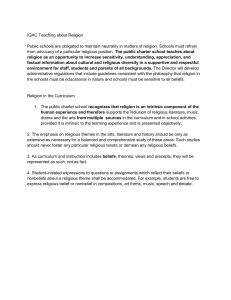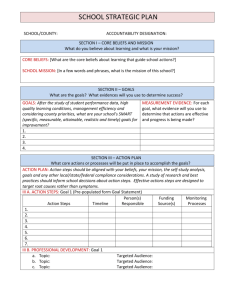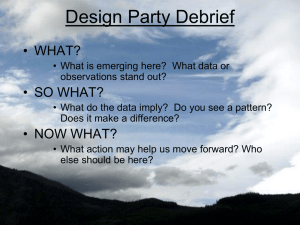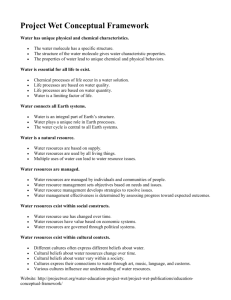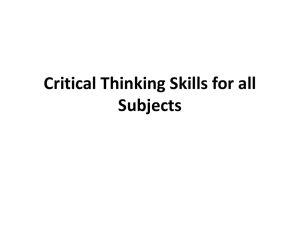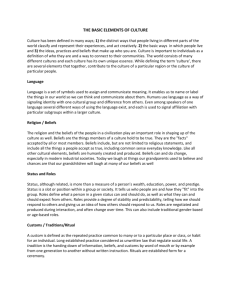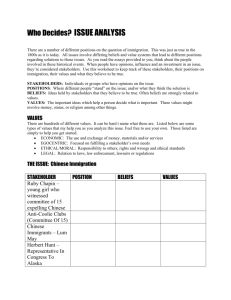Teachers` Beliefs and Technology Practices
advertisement
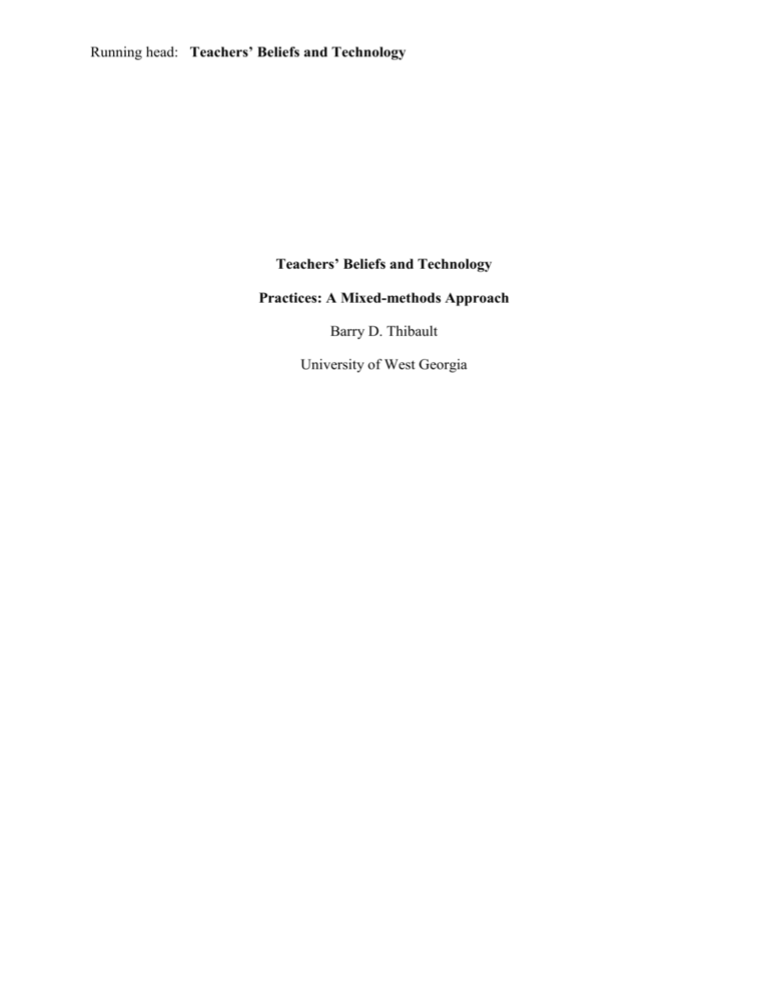
Running head: Teachers’ Beliefs and Technology Teachers’ Beliefs and Technology Practices: A Mixed-methods Approach Barry D. Thibault University of West Georgia Teachers’ Beliefs and Technology 2 ` Teachers’ Beliefs and Technology Practices: A Mixed-methods Approach Journal Review Article Journal: Palak, D., Walls, Richard. T (2006). Teachers’ Beliefs and Technology Practices: A Mixed-methods Approach. Journal of Research on Technology in Education, 38(4), 409–424.E. Retrieved September 20, 2010 from : http://www.eric.ed.gov/PDFS/EJ844274.pdf Article Contributors: Deniz Palak, EdD, Assistant Professor of the Master of Science in Instructional Technology Program at New York Institute of Technology. Interests: Designing and Evaluating Teacher Professional Development Technology Integration Specialist Teacher Pedagogy Graduate of West Virginia University Richard T. Walls, PhD, is a professor of educational psychology as well as the director of the International Center for Disability Information. Interests: Learning and Instruction Teaches at West Virginia University Outstanding teaching from the College of Human Resources and Education and from WVU Distinguished Scholar award at WVU. Published more than 100 journal articles and book chapters on learning, training, and vocational rehabilitation. Teachers’ Beliefs and Technology 3 ` Article Keywords: teachers’ beliefs instructional technology practices mixed methods student-centered teacher-centered Article Intended Audience: The intended audience for this article are teachers in the classroom that use a student- centered design approach to technology integration. Teachers/Administration that intend to plan to implement a technology professional development for all new teachers that plan to use technology in the class room. Professional development integration needs to focus on the use of technology into curriculum via student-centered pedagogy teacher practice/development must takes place Future technology research must use mixed methods (preparation, management, administrative purposes, student-centered) consider teachers’ beliefs if change in practice is the desired outcome The integrated mixed-methods results provide more classroom benefits Teachers’ beliefs guide the decisions teachers make and actions they take in the classroom Objective/ Purpose of the Article The author states that the article was, "prompted by the ongoing contradictions in findings and respects the complexities involved in researching the messy nature of teachers’ beliefs. It was intended to bridge the gap in the literature regarding the relationship between teachers’ beliefs and their instructional technology practices". Findings: Teachers use technology most frequently for preparation, management, and administrative purposes. Teachers’ use of technology to support student-centered practice Teachers’ Beliefs and Technology 4 ` is rare even among those who work at technology-rich schools and hold student-centered beliefs. Teachers in technology-rich schools continue to use technology in ways that support their already existing teacher-centered instructional practices. Any inquiry into teachers’ practices should involve a concurrent investigation into teachers’ educational beliefs, as beliefs profoundly influence teacher perceptions and judgments, which in turn influence their classroom behavior (Pajares, 1992). Professional development with a focus on the integration of technology for studentcentered practices appears to have a positive effect on shifting beliefs and practices (Matzen & Edmunds, 2007; Sandholtz, Ringstaff, & Dwyer, 1997). Article Strengths The article discusses many important issues and clarifies new demands in using technology in the classroom. Most important, how these latest technology investments must introduced to teacher professional development to help them integrate technologies in the classroom and bring about a systematic change toward improving student learning outcomes (Cuban, 2002; Fullan, 2001; Fullan, 2003; Guskey, 2002). The articles main strength includes the discussion of the investigation whether schools’ technology investments and teachers' increasing ability to use technology have played a major role in the way teachers use technology to improve student learning outcomes. Article Goals/Questions How do teachers’ beliefs relate to their instructional technology practices? How do factors other than beliefs relate to teachers’ instructional technology practices? Teachers’ Beliefs and Technology 5 ` Do teachers who work in technology schools and who are equipped to integrate technologies change their beliefs and consequently technology practices toward a student-centered paradigm? Teachers’ beliefs guide the decisions teachers make and actions they take in the classroom Article Observations/Outcomes: Data was analyzed, collected and compared from the sample educators along with interviews and other qualitative data (teacher reflections, classroom observation notes, and a lesson plans) as well as against a self-report data. The study data was used to find: (a) teacher beliefs about education (b) teacher beliefs about curriculum (c) teacher and student technology use (d) teacher attitudes toward technology (e) support for technology integration (f ) impact of technology integration on their practice Article Results: On the issue of the relationship between teachers’ beliefs and their instructional technology practices, our findings corroborate results from prior research that indicate teacher technology use in schools with abundant technology did not transform teaching into more student-centered practice (Cuban, 2002; Teachers’ Beliefs and Technology 6 ` Cuban, Kirkpatrick, & Peck, 2001; Judson, 2006; Windschitl & Sahl, 2002). The article concludes that teachers in technology-rich schools continue to use technology in ways that support their already existing teaching approach. Journal References: Judson, E. (2006). How teachers integrate technology and their beliefs about learning: Is there a connection? Retrieved September 19, 2010 from: ERIC: Journal of Technology and Teacher Education, Palak, D., Walls, Richard. T (2006). Teachers’ Beliefs and Technology Practices: A Mixed-methods Approach. Journal of Research on Technology in Education, 38(4), 409–424.E. Retrieved September 20, 2010 from : http://www.eric.ed.gov/PDFS/EJ844274.pdf Purdue University Online Writing Lab (OWL) (May 5, 2010). APA formatting and style guide. Retrieved September 19, 2010, from: http://owl.english.purdue.edu/owl/resource/560/01/.
